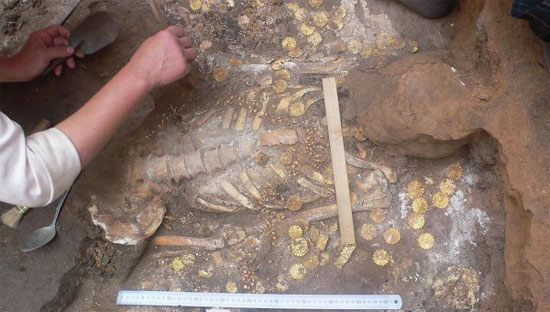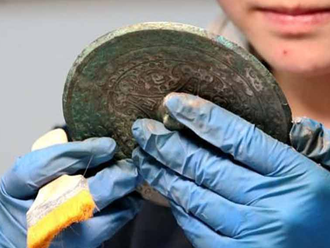Archaeologists from the University of Bashkortostan (the Republic of Bashkortostan, part of the Russian Federation), have just found the intact grave of a noble woman in southern Russia. It contains many valuable artifacts.
This tomb may be the burial place of a member of the powerful Sarmatian tribe, which roamed the steppes of Asia and Europe 2,500 years ago.
 Gold artifacts in the tomb. (Photo: University of Bashkortostan)
Gold artifacts in the tomb. (Photo: University of Bashkortostan)
The Sarmatians were a group of Persian-speaking tribes who controlled large areas – now Southern Russia, Ukraine and Central Asia – from about 500 BC until 400 AD. They are often mentioned by ancient Greek historians and left behind lavish, luxurious tombs with many exquisite gold and bronze artifacts – a target for thieves.

According to Professor Gulnara Obydennova, head of the Institute of Historical and Legal Education in the city of Ufa in the Republic of Bashkortostan, the grave was found near the village of Filippovka in the Orenburg region (Orenburg province, Volga Federal District of Russia). and was never robbed.

“This discovery is of great significance because the tomb is intact, so the objects and jewelry in it are exactly where the ancient nomads arranged them.”
 Excavation area. (Photo: University of Bashkortostan)
Excavation area. (Photo: University of Bashkortostan)
The crypt is located at a depth of 4 meters underground and includes 24 mounds containing hundreds of statues of deer, griffin monsters, camels made of gold and silver, ships and weapons.
Obydennova said the woman’s skeleton was still covered with jewelry and decorations, holding a silver mirror with a gold handle in her left hand.
The descendants of the Sarmatians are the Ossetians, an ethnic minority living in the Caucasus mountains, whose language is related to Persian.





